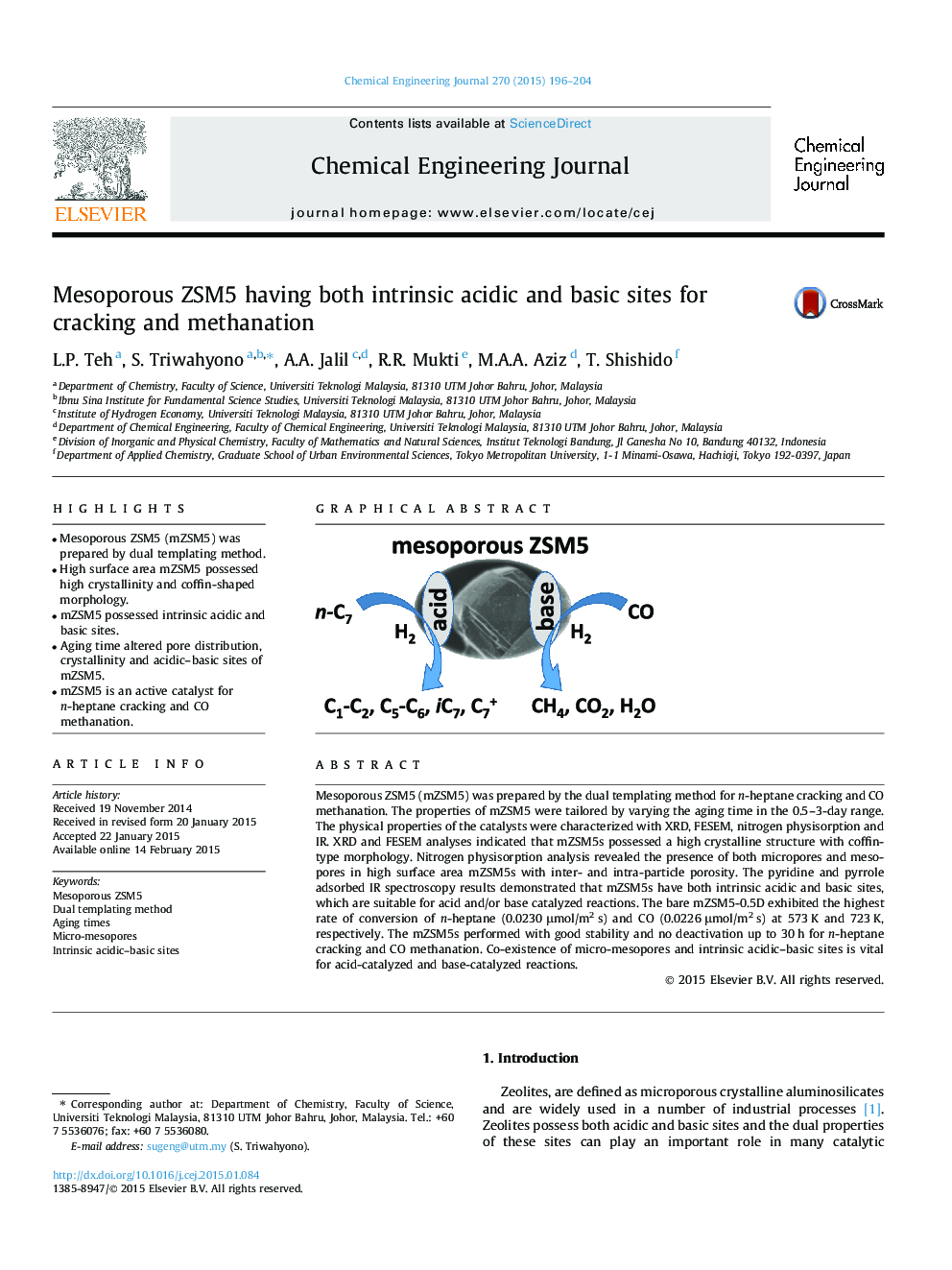| کد مقاله | کد نشریه | سال انتشار | مقاله انگلیسی | نسخه تمام متن |
|---|---|---|---|---|
| 146482 | 456371 | 2015 | 9 صفحه PDF | دانلود رایگان |

• Mesoporous ZSM5 (mZSM5) was prepared by dual templating method.
• High surface area mZSM5 possessed high crystallinity and coffin-shaped morphology.
• mZSM5 possessed intrinsic acidic and basic sites.
• Aging time altered pore distribution, crystallinity and acidic–basic sites of mZSM5.
• mZSM5 is an active catalyst for n-heptane cracking and CO methanation.
Mesoporous ZSM5 (mZSM5) was prepared by the dual templating method for n-heptane cracking and CO methanation. The properties of mZSM5 were tailored by varying the aging time in the 0.5–3-day range. The physical properties of the catalysts were characterized with XRD, FESEM, nitrogen physisorption and IR. XRD and FESEM analyses indicated that mZSM5s possessed a high crystalline structure with coffin-type morphology. Nitrogen physisorption analysis revealed the presence of both micropores and mesopores in high surface area mZSM5s with inter- and intra-particle porosity. The pyridine and pyrrole adsorbed IR spectroscopy results demonstrated that mZSM5s have both intrinsic acidic and basic sites, which are suitable for acid and/or base catalyzed reactions. The bare mZSM5-0.5D exhibited the highest rate of conversion of n-heptane (0.0230 μmol/m2 s) and CO (0.0226 μmol/m2 s) at 573 K and 723 K, respectively. The mZSM5s performed with good stability and no deactivation up to 30 h for n-heptane cracking and CO methanation. Co-existence of micro-mesopores and intrinsic acidic–basic sites is vital for acid-catalyzed and base-catalyzed reactions.
Figure optionsDownload as PowerPoint slide
Journal: Chemical Engineering Journal - Volume 270, 15 June 2015, Pages 196–204